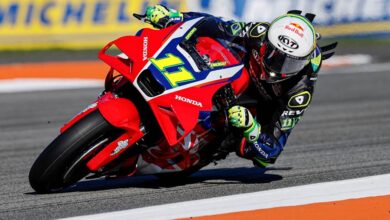Behind the pilot: Who makes up a Formula 1 team?
Although in each race the pilots receive almost all the credit, there are many professionals behind them who are vital to their performance.

Behind every driver in Formula 1, there is a great team that guarantees the success of this competition. / Photo: Unsplash – Alex Gorbi
LatinamericanPost| Juan Manuel Bacallado
Escucha este artículo
Leer en español: Detrás del piloto: ¿Quiénes conforman el equipo de Fórmula 1?
Formula 1 is the highest motorsport in the world that exists today, with only 10 teams competing for the award and 20 pilots running on the track. However, although the majority of the credit is taken by the pilots each team has a large group of professionals and engineers specialized in their area.
Mechanics
If there is something fundamental in any motorsport, it is mechanics. These are responsible for testing the car's engine before each race to verify its performance, as well as repairing and maintaining the car in optimal conditions, taking into account that time always plays against them and they must have everything ready for each race. Sometimes they only have a week or even hours of preparation, according to Motorlat.
It may interest you: 5 facts that will surprise you about F1
Despite the fact that Formula 1 races are held on Sundays, the mechanics start their work from Tuesday, taking out the cars and preparing them so that on Friday they are ready to start the laps that will decide their starting position on Sunday. For this reason, they work according to the perception and demands of the pilots, whether for example, the pilot tells them that he needs power or loses grip, the team of mechanics led by a team leader will be responsible for solving these problems. In addition, the mechanics have an already well-known function, replacing tires and other changes when the car goes to the pits, doing it in an incredible time. (most of them should do not exceed 3 seconds)
Estos 1.82 segundos son el récord de la parada de pits más rápida de la Fórmula 1 y fue hecha el pasado domingo.
Estos mecánicos trabajan por horas y horas para no fallar y hacer todo a la perfección y aquí el resultado. pic.twitter.com/JZwufWr2O5— Salvador Sánchez (@Chava_SD) November 20, 2019
Strategist
Not everything is speed and handling since, without a clear strategy adapted to each circuit and the performance of all competitors, the difficulties of achieving a good position are even greater. The strategists are the "brain" behind each decision, they take into account performance data obtained in the races for the classification the previous days, for example the wear of the tires as the laps pass or the amount of gasoline in the cars. From this they must generate legal strategies to score points, according to Soy Motor review.
An example of a strategy victory was experienced on the Hungarian circuit in the 2019 season, in which Red Bull driver Max Verstappen dominated the race and had Lewis Hamilton from Mercedes behind. Despite the fact that the usual plan on the circuit is to stop once in pits to change tires, James Vowles, head of strategies at Mercedes, decided that Hamilton should make a second stop to mount medium tires, an idea that the pilot himself saw as a disadvantage.
However, as the laps went by, Hamilton managed to pass Verstappen, thanks to the excellent condition of his tires, while Verstappen had to stop later to avoid the risk of an explosion in his tires. All of this was possible due to data collection during Friday's race, in which the Mercedes team collected info on the duration of the tires in Hamilton's and Verstappen's car.
Lewis Hamilton, Mercedes y su estratega James Vowles ganaron un GP de Hungría inolvidable, con un Hammertime agresivo en las últimas 20 vueltas y una parada inesperada para poner gomas nuevas en el final. Verstappen fue segundo y Vettel tercero.#HungarianGP #F1 #F1xFOX pic.twitter.com/D8USiuWvPL
— Enrico Tornello (@EnricoTornello) August 4, 2019
Also read: Find out the best records and fun facts of Formula 1
Engineers
This is the largest group, made up of around 15 to 20 engineers with different specializations, according to what the Mercedes AMG website says. These professionals are divided into groups with specific functions for each one. The main one is the race engineer, this is the one who communicates directly with the pilot, telling him everything about the track, such as if he has traffic nearby or how the times of his competitors are going. In addition, he is the one who communicates to the rest of the team everything he receives from the pilot, making him the link between the two.
#F1 @Max33Verstappen insiste en que su relación con el ingeniero de carreras, Gianpiero Lambiase, "ha funcionado muy bien" y la clave está en que "Es un tipo que no habla demasiado. No me gusta alguien que está hablando solo para hablar" pic.twitter.com/eJ78MMvW1G
— Antonio Llinares (@Astoraka) January 18, 2020
There is also the performance engineer, who works in conjunction with the race engineer. In his case, he is in charge of analyzing the performance of each part of the car, doing simulations and advising the pilot through the race engineer on how to make the most of the vehicle and the settings to be made to achieve it. In another area is the control engineer, he makes sure that the controls of the car work properly before starting the race, while during this he takes care that the settings are optimal.
Finally, there are the engine engineers, who are divided into one group for the power unit and another for the engine system, both complement each other since while the first seeks to obtain greater power performance, the second takes care that it does not affect the single-seater reliability and thus avoid failures or communicate them to change the configuration again.





